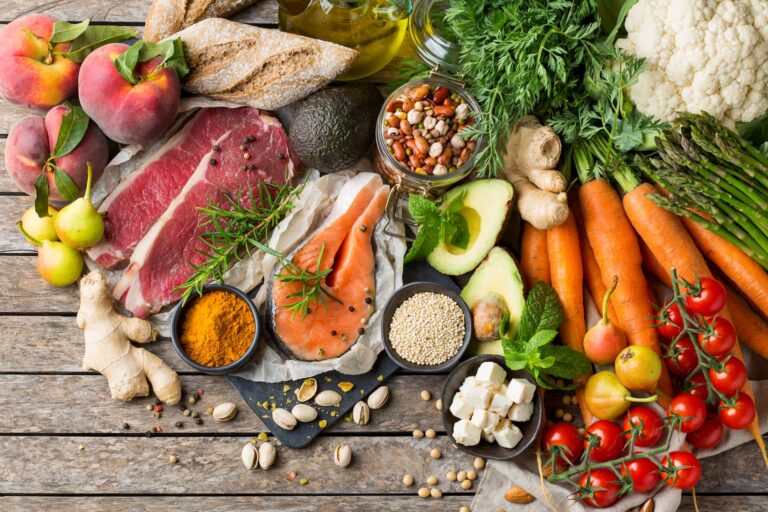
Iron-rich foods: let’s find out about them to know how they can be useful for our body
Iron is a precious nutrient for our body because it plays an important […]
What is the purpose of iron? Let’s find out more about its importance for the well-being of our body and what foods contain it, using the iron-rich food table.
Before proceeding with the iron-rich foods table, it is important to remember what functions this precious nutrient performs and what is the daily amount of iron our body needs.
Iron is an essential nutrient for the production of haemoglobin, a red blood cell protein that binds oxygen and promotes its transport in the blood, myoglobin, which plays a similar role to haemoglobin, but within muscles and cytochromes, enzymes that contribute to our body’s normal energy metabolism. Iron is also a fundamental element during pregnancy, breastfeeding and childhood, as it supports the growth of the body and the normal development of the cognitive function. Iron is important at all ages for supporting the normal function of the immune system.
Under normal conditions of health, our body needs approximately 10-14 milligrams (mg) of iron per day. Some specific physiological conditions, such as pregnancy, may require an increased body iron requirement and, in these cases, the daily intake of this mineral may increase to over 20 mg. The growth phases of children and adolescents, the menstrual cycle and breastfeeding may also require increased iron requirements.
Food is one of the main sources of iron for our body. Through the intake of iron-rich foods, our body is able to rebalance the amounts of this precious nutrient that are lost through sweating, stools or, in the case of women, also through menstruation and breastfeeding.
The iron consumed through diet is absorbed in the bowel (duodenum) and is transported throughout the body by transferrin. Iron that is not used immediately is stored mainly in the liver, but also in the spleen, bone marrow and skeletal tissue, bound to ferritin, a storage protein. When an iron deficiency occurs, the body uses its storage to maintain normal levels of iron in the blood. When the levels of circulating iron in the blood decrease, low serum iron occurs. When iron deficiency starts to become significant or prolonged, typical symptoms of sideropenic anaemia (iron deficiency anaemia) could occur, such as, for example:
Both animal- and plant-based can be valuable sources of iron. In animal-based food, iron is derived from the haemoglobin and myoglobin present in the blood and muscle of the animal. This iron is linked to porphyrins and, with the latter, constitutes what is known as haem iron. Haem iron is absorbed more easily than non-haem iron, which is mainly present in plant-based food. However, fruit and vegetables, often contain also vitamin C, a nutrient that promotes the absorption of iron.
The following table lists the top 50 iron-rich foods (source: CREA – Food Nutrition)
| Food | Quantity of iron (mg of Fe in 100 mg of food) |
| Bovine spleen | 42 |
| Pork liver | 18 |
| Tea, leaves | 15.2 |
| Corvina | 14.4 |
| Bitter cocoa, powdered | 14.3 |
| Wheat bran | 12.9 |
| Sheep’s liver | 12.6 |
| Caviar, sturgeon | 11.8 |
| Black pepper | 11.2 |
| Wheat germ | 10 |
| Mint (fresh) | 9.5 |
| Horse liver | 9 |
| Beans – Borlotti dried | 9 |
| Beans – Cannellini dried | 8.8 |
| Beans – black-eyed dried | 8.8 |
| Cow’s liver | 8.8 |
| Rosemary (fresh) | 8.5 |
| Bovine kidney | 8 |
| Beans | 8 |
| Lentils dried | 8 |
| Radicchio (green, fresh) | 7.8 |
| Pistachios | 7.3 |
| Soy flour | 6.9 |
| Soy dried | 6.9 |
| Bovine lung | 6.7 |
| Chickpeas dried | 6.4 |
| Chicken eggs (whole, powdered) | 6.3 |
| Frog, raw | 6.0 |
| Oyster | 6 |
| Peaches dried | 6 |
| Cashews | 6 |
| Mussel | 5.8 |
| Seabream | 5.6 |
| Muesli | 5.6 |
| Basil, fresh | 5.5 |
| Scorpionfish | 5.5 |
| Lupin beans soaked | 5.5 |
| Liver sausage | 5.3 |
| Apricots dehydrated | 5.3 |
| Pig’s heart | 5.3 |
| Rocket (fresh) | 5.2 |
| Oat Flakes | 5.2 |
| Apricots dried | 5 |
| Sheep’s heart | 5 |
| Broad beans (dried, shelled, raw) | 5 |
| Horse Heart | 5 |
| Chocolate dark | 5 |
| Chicken eggs yolk | 4.9 |
| Brewer’s yeast compressed | 4.9 |
| Cow’s heart | 4.6 |
The iron-rich foods table is an important starting point for setting a varied and balanced diet suitable for keeping normal iron levels in the body under control. However, in some cases, it may be useful to supplement the diet with specific nutritional supplements. The SiderAL® range of food supplements, based on Sucrosomial Iron®, can be useful in the event of an iron deficiency or increased body iron requirements.
The technology that guarantees the best absorption of Iron.
Find out moreRegistered Office Via Campodavela, 1 56122 Pisa
Tel. +39 050 7846500
Fax +39 050 7846524
C.F. / P.Iva / Reg. Impr. 01679440501
Cap.Soc. € 1.123.097,70
I.V. | REA 146259
pharmanutra.it